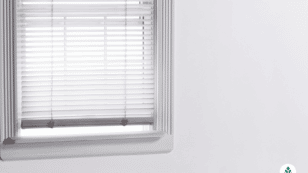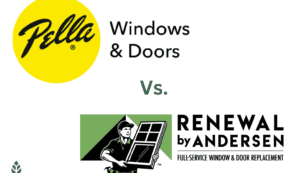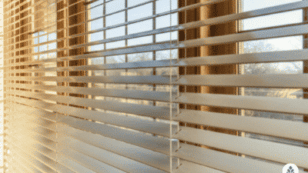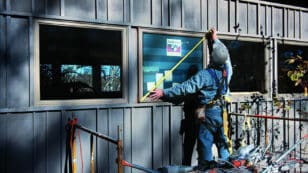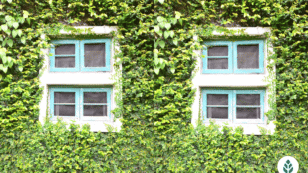
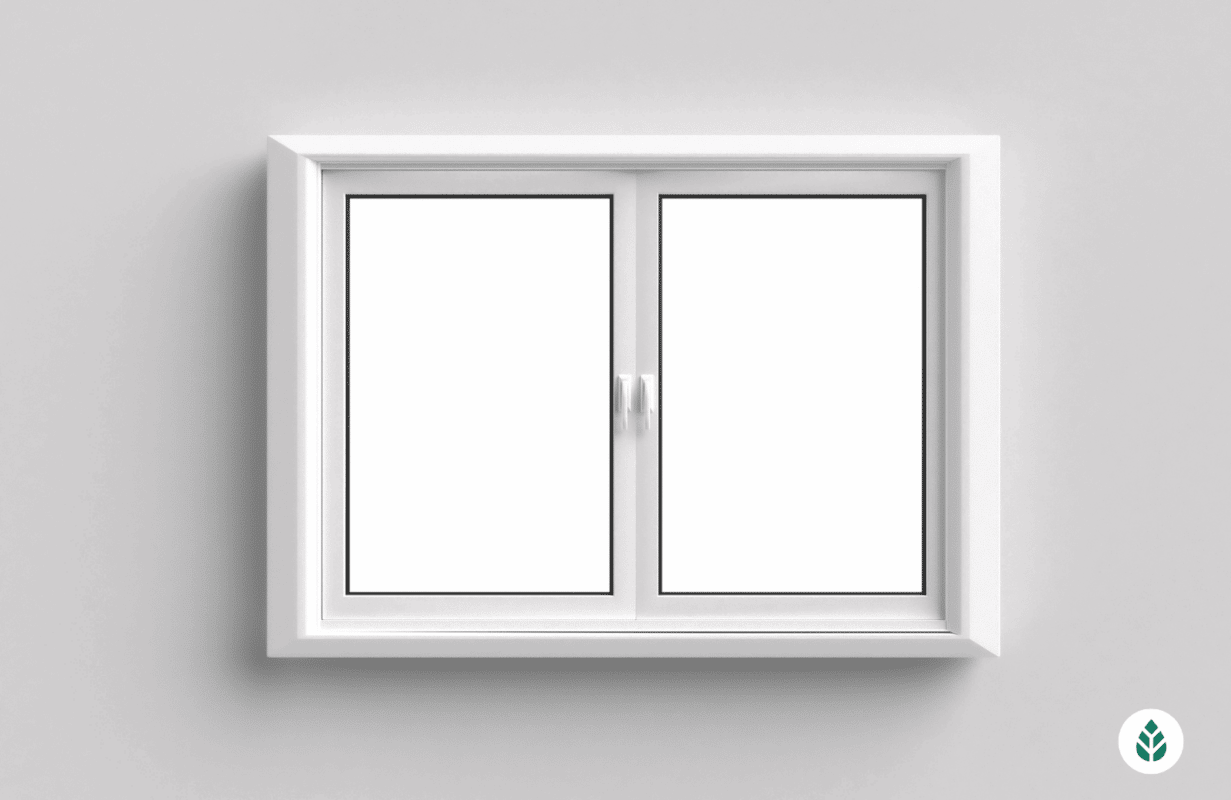
Casement Windows Cost 2024: Replacement & Installation Guide
In this guide to purchasing casement windows, we’ll cover:
- The national average price to replace a casement window, which is around $750 per window or between $450 and $1,200
- Why frame and glass materials are a bit less important for this style of the window than for others
- Why casement windows are the most energy-efficient operable window type available
Each product and or company featured here has been independently selected by the writer. You can learn more about our review methodology here. If you make a purchase using the links included, we may earn commission.
This article was written with the assistance of AI, but it has been thoroughly edited and verified by an expert human editor to ensure accuracy and quality.
Replacing a casement window yourself might be tempting, but in most cases, it’s well worth the money to have a professional complete the work for you. This is especially true since the average price to replace a casement window is around $750, which isn’t terribly expensive. Most homeowners pay between $450 and $1,200 for this service.
In this guide to choosing and installing casement windows, we’ll discuss what casement windows are, the pros and cons of this style of window, and average prices. We’ll also go over cost factors that can affect your price, how to save money in the process, and more.
What Are Casement Windows?
Casement windows are a style of operable windows. In most cases, the window sash is taller than it is wide. The sash is hinged on the side and opens like a book. Most casement windows have a crank inside that allows you to open and close the sash.
Casement windows can be installed as single windows, but they’re more often seen in groups of two, three, four, or more. They are components of bay windows and bow windows in many cases.
Casement windows are most common in living rooms, although they can technically be installed in any room in your home.
Double-Hung Windows Vs. Casement Windows
Double-hung windows and casement windows are two of the most common styles of windows in homes in the U.S., but it’s easy to tell the difference between the two.
Double-hung windows have two sashes — a top sash and a bottom sash — that slide independently of one another and often tilt inward for easy cleaning. Casement windows have just one sash that is hinged on the side and opens outward like a book.

Renewal by Andersen
Pros
- Great industry reputation
- Award-winning company
- Member of US Green Building Council
- Manufactures products in-house
Cons
- No lifetime warranty
- More expensive than competition

Window World
Pros
- EnergyStar Partner
- Large service area
- Wide variety of products and services
- Great industry reputation
- Lifetime warranty
Cons
- Quality of service will depend on your area

Window Nation
Pros
- Award-winning company
- Wide variety of products and services
- Manufactures products in-house
- Custom Designs
Cons
- Installation not covered by warranty
- Limited service area
Benefits of Casement Windows
Casement windows are one of the most popular window types and for good reason. They provide quite a few benefits over other styles, which we’ll explain briefly below.

- Energy efficiency: The sash on a casement window clamps shut and compresses a full seam of weatherstripping around the edges. As compared to other window styles with sliding seams, this is the most energy-efficient window style with the best Energy Star ratings and the greatest energy savings of any operable window.
- Maximum ventilation: Other styles of windows that open usually have a sash that blocks part of the window opening from cross breezes, as is the case with single-hung windows and double-hung windows. Casement windows — like awning windows — have a sash that fully pulls away from your exterior wall, providing the maximum amount of airflow.
- Unimpeded natural light: Many other styles of the window have rails, muntins, and grilles that block some of the light. The sash on a casement window is often made entirely of glass, so you get maximum light into your living area.
- Unimpeded view of the outdoors: Similarly, casement windows don’t block your view of the outside with muntins, rails, or grilles. That also means they serve as a better egress window in the case of an emergency.
- Excellent curb appeal: Most homeowners love the appearance of casement windows on the front of a home. They break up the monotony of other window options on the exterior.
- Easy to clean: Finally, casement windows are relatively easy to clean. Unlike with sliding windows, there are not many places where hard-to-reach dirt and dust can accumulate and any cleaner can be used.
Drawbacks of Casement Windows
Of course, casement windows aren’t perfect, and there are some downsides to installing them in your home. We’ll briefly discuss the primary drawbacks of this type of window below.
- Security: Casement windows rely on interior hardware — including gears, hinges, and hand cranks — to maintain security, while other window options often have additional railings to provide security. As such, casement windows come with an increased risk of home intrusion and burglary, especially as they age.
- Cost: Casement windows are a bit more complicated than many other styles, and they require more complex hardware. For these reasons, they cost more than many other standard window options.
- Maintenance: Once again, the hardware involved in a casement window’s functionality presents a downside. These windows often need more maintenance to ensure they work properly, especially as compared to simpler picture windows and single-hung windows.
- Size limitations: Casement windows are relatively popular, but they aren’t nearly as prevalent in homes as many other styles — so you’ll have fewer options for sizes for this window type, sometimes making it more difficult to find replacement windows or new construction windows.
- Can’t accommodate air conditioners: Unlike windows with sliding sashes, casement windows cannot be fitted with window ACs. As such, many people don’t put them in bedrooms or in areas where central AC or ductless AC isn’t available.
How Much Are Casement Windows, Really?
As mentioned above, the average cost to replace a casement window is around $750, which is higher than the overall average replacement cost of $600. Most property owners spend between $450 and $1,200 to replace a single casement window, and prices can easily fall outside of this range.
The number of casement windows you’re replacing, the window frame material, glass type, and hardware options can all affect your costs and bring your total well over $1,200. The size of the window also plays an important role in your total.
Window Cost Factors
The price range for casement windows is so wide in part because the material costs can vary quite a lot. Below, we’ll outline the most significant factors that affect your material prices.
- Window style (multiple casements in a set): Single casement windows are the most affordable, but if you have a set of them in one location in your home each window you add will increase the cost by 100% or more.
- Window size: As is the case with all other types of windows, larger casement windows will always cost more, provided all other factors remain equal. The larger the window, the more you’ll pay for the frame and glass materials. Be sure to measure your window to have the most accurate professional quote.
- Frame material: Casement windows can come with a variety of frame types, including vinyl, wood, aluminum, composite material, and fiberglass. Each of these materials provides varying levels of energy efficiency and durability, and they come at wildly different prices in some cases.
- Window construction: Casement windows rely not only on joints between the frame pieces but also on interior components and accessories. The higher-quality crank arms, gears, locks, and hinges will naturally drive up your window costs.
- Window brand or series: The construction and overall quality of your windows are often tied to the brand, so the brand name you choose will play a role in your material pricing. Higher-end brands — like Harvey and Marvin — not only tend to last longer and require less maintenance, but they also usually come with longer warranties, making them more valuable overall than cheaper brands like Jeld-Wen.
- Glass choice and treatments: In addition to the frame options, you also have a few options for the glass you have installed in your casement windows. These include single-pane glass, which is the least efficient, double-pane glass, which offers a nice balance of affordability and efficiency, and triple-pane glass, which is the most insulative but also the most expensive by far. The more panes of glass you add — with argon or krypton gas sandwiched between them — the more you’ll spend on your casement windows.
- Options: Casement windows come with the option of muntins and grilles, and you can also customize the locking and crank accessories to match the interior of your home and your personal preference. These individual costs can add up if you choose high-end options, but they are far from the biggest factors to consider.
- Permit cost: Finally, some townships require a building permit for replacing windows. If yours does, you can expect the filing fee to add between $50 and $200 to your total cost — this often doesn’t multiply if you replace more than one window at a time.
Installation Pricing Factors
The other significant portion of the replacement price for a casement window is for labor. Just like with the material charges, labor costs can vary based on a few factors. We’ll discuss these briefly below.
- Window size and shape: The size and shape of your casement window will affect material costs, but larger and bulkier casement windows can also drive up prices for labor. Depending on the square feet and dimensions, a window might require multiple technicians for a safe installation. If that’s the case, you’ll pay more for the work than you would for a small, one-person job.
- New vs. replacement: There are two types of window installation: installing a window in an empty wall opening in new construction (also called a full-frame window replacement) and removing an existing window to replace it with a new one. The former is less expensive because the work doesn’t take as long.
- Lift requirement: If you’re installing a casement window on the second floor of your home, your window company will usually need to use a lift to bring the window up into place. You will typically have to pay more for the use of the equipment, as well as labor charges to pay the operator.
- Stucco repair: Installing new windows on your home can cause damage to the siding if you have stucco on the exterior walls. This material is insulative, but it can crack and chip easily during exterior work. If your stucco siding is damaged in the process, you’ll have to pay additional money for stucco repair. Usually, this only adds $100 to $200 to your window installation cost.
- Seasonality: Window installers are busiest in the spring and summer when the weather is conducive to opening up exterior walls. With increased demand comes higher prices. If you can wait until the fall or winter to replace your window, you’ll usually save a bit on the labor side of the total.
- Geographic location: Finally, the area you live in can play a small role in your replacement costs. Window technicians in areas with a higher cost of living will need to be paid more, so the labor charges will depend somewhat on where your home is located. This can also have an impact on local material prices.
Average Costs of Casement Windows by Window Style
As mentioned above, casement window styles are generally composed of multiples in a set. The number you choose dictates how costly your window or set of windows will be. We’ll include some average prices for the different styles in the table below.
Type of Casement Window |
Typical Replacement Price (Per Window) |
| Single Casement Window | $750 |
| Double Casement Window | $1,300 |
| Triple Casement Window | $2,000 |
| Quadruple Casement Window | $2,500 |
| Double Casement Window with Picture Window in the Middle | $2,000 |
Casement Window Prices by Size
Casement windows don’t come in as many standard sizes as most others, as the hinges and hardware often limit how wide they can be. However, they still come in a few options. We’ll provide some average pricing by size below.
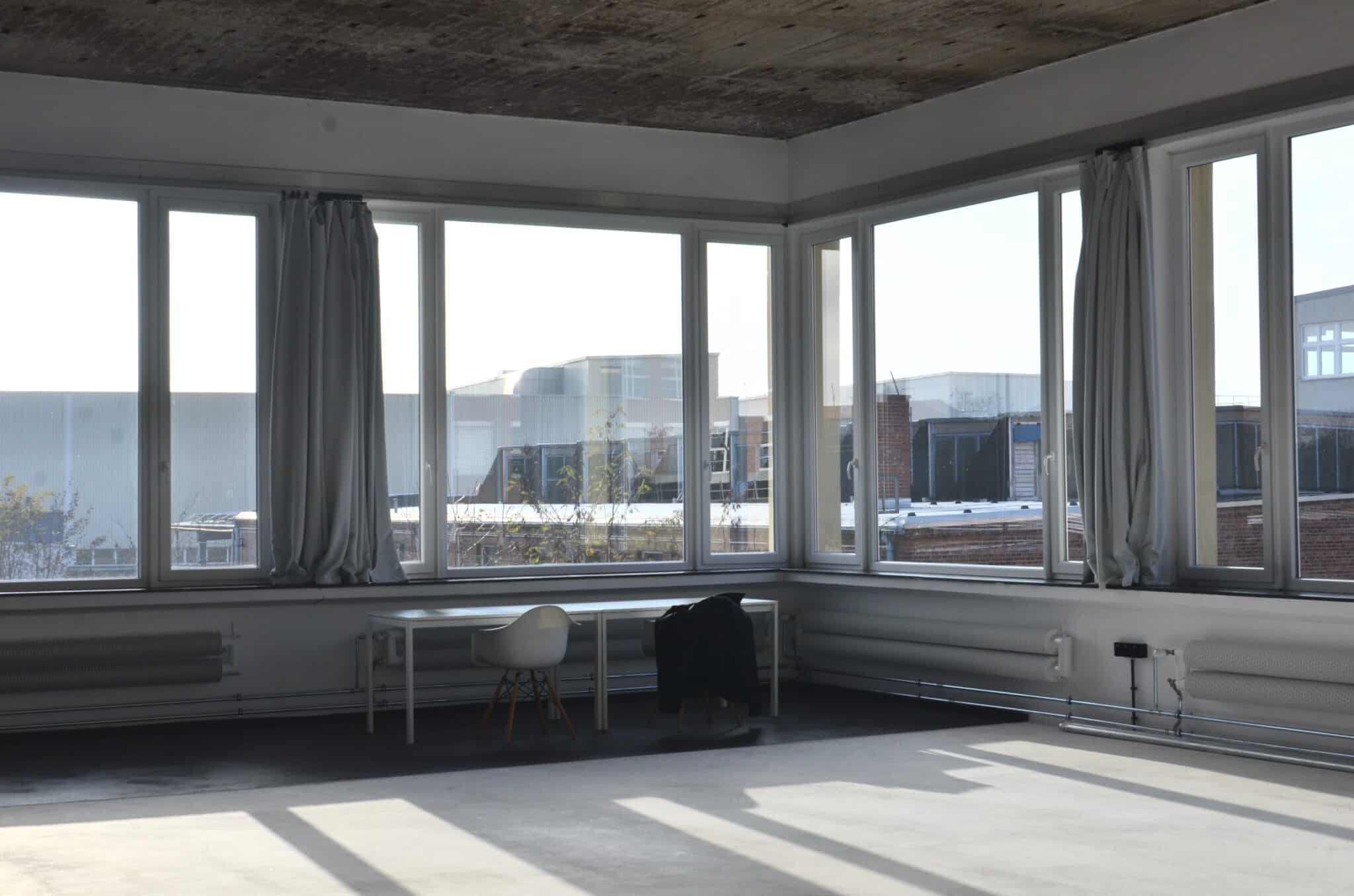
Size of Casement Window |
Typical Replacement Price (Per Window) |
| 19” x 16” | $450 |
| 19” x 29” | $500 |
| 24” x 40” | $600 |
| 24” x 48” | $750 |
| 27” x 27” | $700 |
| 29” x 41” | $850 |
| 29” x 51” | $900 |
| 30” x 48” | $900 |
| 33” x 33” | $850 |
| 38” x 78” | $1,200 |
How to Purchase Casement Windows
When it comes to buying casement windows, you can purchase them from a window manufacturer — like Andersen or Pella — or from a home improvement store or major retailers like Home Depot or Lowe’s. Each comes with some pros and cons.
Buying from a manufacturer costs a bit more, on average, but you more often get higher-quality windows. Manufacturers often couple installation with the window, so you typically get a better warranty. You can also order custom sizes, shapes, and colors. Going with a manufacturer is the best route in most cases.
Buying from a retailer means you can choose to install your window as a DIY project. You also won’t have to wait for the construction process or for delivery, which can take weeks. You will also have more choices in terms of brands and styles.
Best Brands and Pricing for Casement Windows
The brand of the casement window you choose to install in your home will affect the overall quality of the product, the durability, and, most importantly, the coverage included. Therefore, brands can swing the price up or down, irrespective of other window options. We’ll include some average prices for the most popular brands below.
Brand of Casement Window |
Typical Replacement Price (Per Window) |
| American Craftsman | $450 |
| Andersen | $850 |
| Certainteed | $1,000 |
| Harvey | $1,200 |
| Hy-Lite | $800 |
| Jeld-Wen | $750 |
| Marvin | $900 |
| Milgard | $950 |
| Pella | $800 |
| Reliabilt | $650 |
| Simonton | $800 |
How to Get the Best Prices on Casement Windows
Replacing casement windows can get quite expensive, especially if you’re replacing multiple windows at once. Thankfully, there are a few things you can do to keep your expenditure to a minimum.
First, you can choose budget-friendly window materials. It’s best to balance efficiency and up-front cost for the best long-term results. Some of these options include:
- Vinyl casement window frames: Vinyl windows aren’t the best for efficiency, but they provide better insulation than wood windows and aluminum windows, and they are much more affordable than composite and fiberglass window frames. Plus, casement windows are already rather efficient, so choosing vinyl casement windows should suffice for most homeowners.
- Double-pane glass: Similarly, double-pane glass makes the most sense for most homeowners, as it’s more insulative than single-pane glass and often half the cost of triple-pane glass.
- Skip glass treatments: Low-E (low-emissivity) glass coatings and window tinting can be helpful for reducing heat transfer through and light coming in your windows. However, casement windows are already pretty efficient, and these glazing options just add to your up-front cost per window.
Another way to save when replacing casement windows is to look for optimal times to buy. This can mean waiting until the off-season or waiting for holidays when some manufacturers offer discounts and deals on replacement.
Finally, you can save some money per window by replacing all of the windows in your home at once. You will, of course, pay more up-front, but most installers will give a discount on multi-window replacement projects. Doing this will also have the most positive effect on your home’s efficiency, so you could enjoy more savings on your energy bills as well.
Calculating Casement Windows Budget
Calculating your replacement cost and how much you need to budget for your window project overall can be a little intimidating. The formula below should help guide you through the process and you can customize it for your specific window needs.
(Frame Cost + Glass Cost + Labor Costs + Glass Coatings + Window Accessories) x Brand Coefficient = Total Casement Window Replacement Cost
Total Casement Window Replacement Cost (from above) x 0.95 (discount factor) x number of windows in your home = Total Cost to Replace All Home Windows At Once
If we assume you’re replacing an average-sized casement window, forego add-ons, and want to go with a Milgard window, your calculation should look something like this:
($450 + $150 + $150 + $0 + $0) = $750 x 1.3 = $975 for a single Milgard casement window
($450 + $150 + $150 + $0 + $0) = $750 x 1.3 = $975 x 0.95 x 10 windows = $9,262.50 for 10 windows
FAQ: Casement Windows
Casement windows are a bit on the expensive side, not only because they tend to be bigger than other common styles but also because they have more complex hardware. They require high-quality cranks, gears, and hinges to support the full weight of the window sash.
For comparison, the average casement window replacement costs around $750, while a double-hung costs around $600, and a single-hung averages around $450.
The installation process for a casement window is similar to that of other styles. About half the time — around a half-hour to an hour — will be spent removing the old window, and an additional half-hour to an hour will be spent installing the new window.
This process can be complicated by installation on the second floor or by the need to reframe the window opening for a different size casement window. In both of these cases, the process can take much longer.
You should also keep in mind that ordering casement windows from a manufacturer can lead to weeks of delay due to the manufacturing process and delivery.
Casement windows are somewhat secure, but they don’t offer as much security as most other window types. Casement windows rely on hinges and gears for security, and these components can rust and lose strength with age.
Most other styles of window — including double-hung windows, single-hung windows, awning windows and picture windows, or fixed windows — offer a higher level of security.

 233k
233k  41k
41k  Subscribe
Subscribe 





